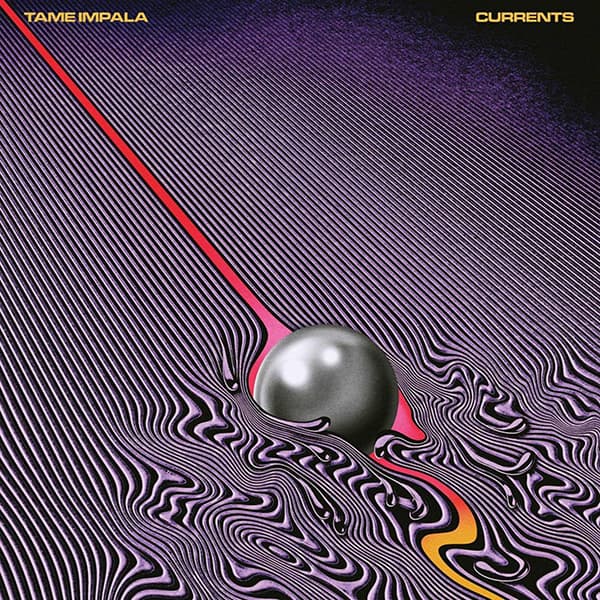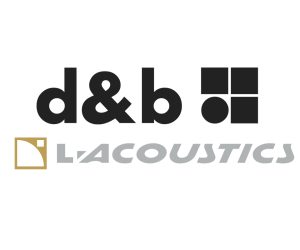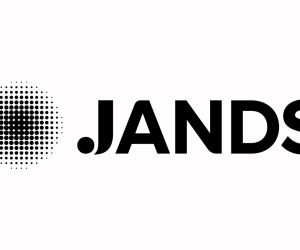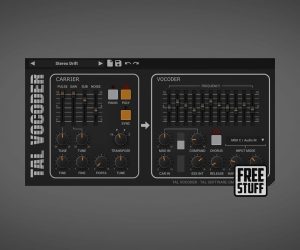
Tame Impala’s: Current Nostalgia
Kevin Parker goes ‘old school’ and mixes Currents himself, finding a balance between lo-fi and his own teenage nostalgia.

Artist: Tame Impala
Album: Currents
“Just got back from tour,” explained Tame Impala frontman, Kevin Parker, settling in for a chat. “Decompressing… no pun intended.”
For anyone that’s followed Parker’s trajectory, compression is no joke. Aside from those catchy psych-pop melodies, Lennon-esque dreamy falsetto, and Dunlop fuzz guitars, the sound of lo-fi, squashed drums was probably the most identifiable part of Tame Impala’s breakthrough album Innerspeaker. And even though the second album Lonerism felt harder to lump in as psych rock, the legacy of Tame Impala continued to be built on that specific kind of nostalgia.
The latest album, Currents, trades on a newer sort of nostalgia, one that — as a teen of the ’90s — resonates more personally for Parker. You can hear it in the hard-ended repetitions of a scratched CD stuck in a loop on lead track Let It Happen, the Boyz II Men R&B drum machine and ’verby claps on Love Paranoia, and the chiming clarity of digital synths throughout.
“I got a few new keyboards. All I had last time was a Roland Juno 106 and a Sequential Circuits Pro One,” said Parker. “I fell in love with those naff ’90s-sounding keyboards. I’ve got a Roland JV1080 synth module you can plug a MIDI keyboard into. An audiophile would think some of the patches are the cheapest, plasticky sounds. But for me they’re so romantically nostalgic. Because they’re the sounds I remember from when I was growing up in the ’90s. The sounds that remind me of something I heard on the radio in the car.
“That’s the truest kind of nostalgia I can find. Those plasticky sounds are far more nostalgic and hit a deeper spot for me than hearing a vintage Fender twin. Even though they’re sort of cheap sounds, they sound deeply fulfilling. There’s a lot of that on the album, glistening FM synth electro Rhodes, like a digital clav.”
It’s a tough break for those young producers who’ve toiled over their Tame Impala emulations: Tea towels on kits, saving up for Juno 106s on eBay, and asking forums whether a dbx 160A would substitute for a dbx 160VU. Now they’re going to have to contend with an inflated market for Roland JV1080s.
Parker is the modern home studio poster boy. The ideal for a lot of bedroom producers who like the idea of rock ’n’ roll, but don’t necessarily want to deal with band politics when it comes to writing songs. Just like those ‘lucky’ electronic producers, he justified the case for aspiring rockers to forgo the usual band-in-a-studio route, and play everything into a DAW themselves. The demo-in-a-day deal market has shrunk with the rise of a growing contentedness to wile away at the process rather than feel forced to produce in a short window.
Of course, not everyone is Kevin Parker. In fact, no one else is. But it hasn’t stopped leagues of musicians trying to emulate his every sound, image, and pedal board purchase.
IN-HOUSE MIX
While flying completely solo looks nice on paper, for this generation of psych rock-acquainted bedroom producers, one name (outside their own) they’d be happy to see on the mix credit is Dave Fridmann’s. Fridmann is the hero of indie psych-rock mixing; fearlessly experimental and not afraid to go for colour. Probably most well-known for producing and mixing The Flaming Lips, he’s also leant psychedelic weight to Mercury Rev, Sparklehorse, MGMT, Mogwai, and so many more. When Parker handed the mix for Tame Impala’s second album, Lonerism, to Fridmann, that combo became the benchmark for this crowd.
For his latest album, Currents, Parker decided to take back the reins and do the whole thing himself; play, record, and mix at home. He’s mixed his own music before, and done the same for Pond and Melody’s Echo Chamber, but taking over after such success with Fridmann must have required a newfound confidence. “It wasn’t even really confidence,” said Parker. “It was more like a leap of faith. I just wanted to see if I could do it myself. Dave is an amazing mix engineer. Even as I was doing it myself I found that I was pretending to be him.
“Because of the sound and the way the songs were coming together, it felt like an altogether different way of mixing anyway. I was combining things usually done in the electronic world — like looping whole sections of the mix while leaving others unlooped on top, and filtering whole sections — but at the same time trying to get the drums to sound classic, awesome, and Dave Fridmann-y.”
Fridmann-y is a difficult adjective to describe, says Parker. “Naturally it’s all those nuances you can’t properly describe that he does so well. If you could put it into words, that would mean you could probably copy it really easily. It’s the way his sound is so crispy and cooked, so deep-fried, but at the same time, so punchy, and doesn’t sacrifice the impact the mix has. That’s the elusive paradox that he’s nailed. The drums can be absolutely swampy and sizzling, yet at the same time hit you right in the chest.
“People generally pass that off as an easily attainable thing, just drive it through a preamp and slap a limiter on it, you know. But it’s so much more elusive that that. You only realise how much of an artform that is when you try to do it yourself.
“I’ve got my own experience of mixing that I’ve been getting better and better at over the years. Which, for me, is the most important thing. I’ve got my mixing style, my drum sounds, and effects I use. It’s mainly instinct that I’m going on. I just have to hope that it comes out sounding listenable.”

A NEW PHASE
When we last talked to Parker, he was revelling in his relative engineering naiveté; recording vocals with a mic wired out of phase, plugging mics into the ‘wrong’ inputs. But this time he stepped up his professional attitude. “That’s not to say it was all the way there,” he laughs. “I still do things that would be laughable to professional recording engineers. To me it justifies the way I do it in a sense. I have a disturbed pride in the fact I don’t do it like everyone else. I don’t do it in Pro Tools. In the end, it doesn’t really matter. But to me it feels good that I’m a bit rogue.
“Julian, the other drummer in Tame, he played me this album the other day. And I thought he’d gone to an extremely professional studio in France. It sounded amazing. But then he told me he did it all in Garageband. I couldn’t believe it. It’s the world we live in these days, there are no rules.”
Taking on the mix was as much about gauging his current ability to pull it off, as it was an excuse to get some new gear. Gear only a professional would use. “It was a good excuse to buy stuff I could never justify getting, unless it was something as important as mixing my own album. It sounds selfish. I’m not a professional studio owner, who lives off mixing people’s albums. So I’ve never really bought gear that is just involved in mixing.”
The main adjustment to his mixing routine has been an analogue summing setup that takes that task out of Ableton Live’s hands and adds a bit of colour to the stereo bus. He bought two 16-channel Lynx Aurora converters that feed a pair of passive 16-channel RMS216 Folcrom passive summing mixers. The sum of the 16 stereo channels hits a pair of Neve 1073DPA preamps first to “crunch the mix up” and make up gain, then an SPL Vitalizer, the one piece he’s had for a while and is “just like a glorified EQ that adds a bit of artificial valve quality.” The last thing strapped across the master bus is a Manley Vari-Mu compressor before it gets fed back into the DAW to print. The gear doesn’t see any use other than for mixing, so it allows Parker to leave it set up and return to any mix at will. “I’ve always loved mixing with Ableton,” said Parker. “But I love the sound of a mix being crunched together in analogue. I love the sound of a desk, but I hate not being able to recall any time I want. I flit between songs, sometimes every few minutes. It goes completely against my workflow to have to set up for one song by going around the room and setting EQ knobs on a desk and adjusting faders to how the mix was last time. It’s against how I’ve grown up working.”
It’s a big step up from “just whatever plug-in in Ableton” he used to place over his master bus. He’s always had outboard channel compressors, but never pressed them into service over his whole mix.
That’s no knock on Ableton though, Parker is still a dedicated Live user. “It’s ultimately just what you’re used to. Everyone barracks for their favourite, like a football team. But for me, I find Live so expressive. The whole point of it is that you can link anything to anything, and the automation is amazing. When I’ve been standing over someone’s shoulder watching them use Pro Tools to automate stuff, it seems so laborious. It doesn’t want you to automate. It doesn’t want you to change things that are so easy to change on Ableton.
“I make our live shows on Ableton as well, which demonstrates how versatile it is. The basis of it is just so flexible, and I can move almost as quick as my brain is moving.”
I have a disturbed pride in the fact I don’t do it like everyone else. To me it feels good that I’m a bit rogue

HYBRID DRUMS
Parker recorded Currents in his home studio, where he has two rooms joined; one acting as a control room, the other houses his ‘mongrel of a kit’. “Parts of it are from my old ’60s Ludwig I used on Lonerism,” said Parker. “The kick is a vintage Tama kick I’ve had forever.” As for mics this time, Parker wasn’t that fussed about sticking to a set routine. “It was a bit of a range this time. Between several mics to just one, it really just comes down to how set up the studio is at the time I’m inspired. If I’m inspired to record some drums and there’s only one mic there, then I’ll just say, ‘f**k it.’ Just record it with one mic and go with it. I’m not precious. I used a Shure SM7 on a lot of stuff, for drums and vocals.
“A lot of the drums were a cross between the real kit, a sampler on Ableton with something deep and woofy for the kick, and some drum machine sounds. I’m in love with the Sequential Circuits Drum Tracks drum machine, it’s my favourite drum machine. I recorded a lot of claps myself and used them as a set sample. I just recorded a bunch in a row, with a different hand position each time and put them all together at once, spaced slightly apart. I try and get the best combination so it sounds the most feel good, ‘party times’.”
For guitar recording, Parker uses his go-to guitar signal chain: “It’s the same pedal chain I’ve had for ages; reverb, a bit of compression, a bit of overdrive. I have this Seymour Duncan rack preamp that I love. They didn’t make very many, and it’s not even very good quality, but for some reason, I can’t find anything that’s got the same kind of sizzle to it. I DI all guitars… I haven’t used an amp in years.”
There are some heavy riffs on the record, especially the one that pounds out the choruses in the otherwise dream poppy Eventually. But, rather than layering lots of parts, Parker says, “It’s just a guitar riff, bass riff, and a synth that’s escalating in pitch to add some tension. I find that when you try and make something heavy, the less elements you have in it, the bigger it sounds. If you try and make a heavy riff with seven guitars, three different types of synth, a bass synth, and a bass guitar, it really just muddies it up and loses impact.”
TRANSITIONING OUT OF LO-FI
These days, Parker is using lo-fi elements as a transition effect. Similar to how mix engineers often make the chorus wider, he’ll just dial up the nostalgia in the intros and verses to lull your ears, before hitting them with the power of a full-spectrum sound. It happens a few times across the record; band-passing the drums and guitar intro on The Less I Know Better, and turning the first half of Disciples into a radio pop single from the ’50s. Parker: “For the static on Disciples, I tuned my car stereo to an AM station that wasn’t an actual channel, recorded the static and mixed that in. Someone told me that AM didn’t have anything past 6kHz. So when I mixed it, I just lopped everything past that point to make the whole track sound like it was coming out of an AM radio. I used a multi-band compressor and followed the middle band, so it had that compressed, boxed-in sound. When you turn it off, the song suddenly opens up. I love switching between the two, because your ears adjust to that set of spectrum. It’s like, ‘ok, this is what I’m listening to.’ Your ears forget about the sub and the super top. And all of a sudden, when they kick in, it’s like this sensory, pleasurable thing.
“I’ve always tried to make things hi-fi, but I just haven’t had the ability. At the same time I’ve always loved lo-fi sounds. To me, they’re always the most instantly cinematic. Anything lo-fi, wobbly and crusty instantly transports you. In the past, I’ve used that effect, but it was the whole sound. But this time I’ve been embracing different kinds of textures.
“Not just lo-fi sounds, but juxtaposing sounds that are super clean and super crisp. It makes it sound more like I’ve sampled something and put it in there. I was obsessed with that idea, in the way that hip hop has this really high-quality vocal, and maybe a high-quality drum machine, then the guitar that comes in is totally crusty and boxy sounding. I love that kind of juxtaposition of sound quality.”
Already a master of nostalgia, this new sort Parker has added to his sonic repertoire perfectly complements the eclectic nature of his new material. While it was wrong to pigeon-hole Lonerism as just psych rock, Currents is completely new ground for Tame Impala that feels vaguely familiar.
















RESPONSES